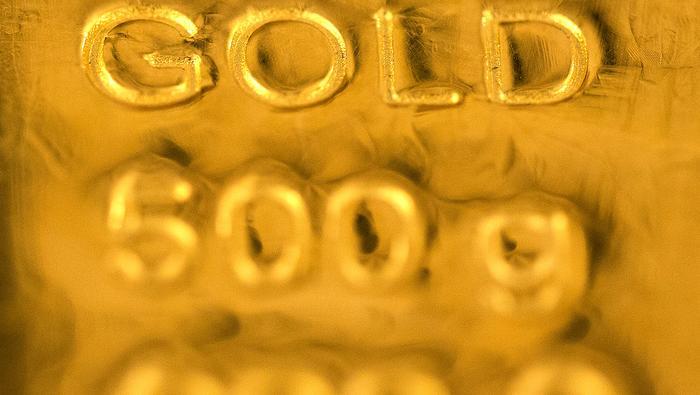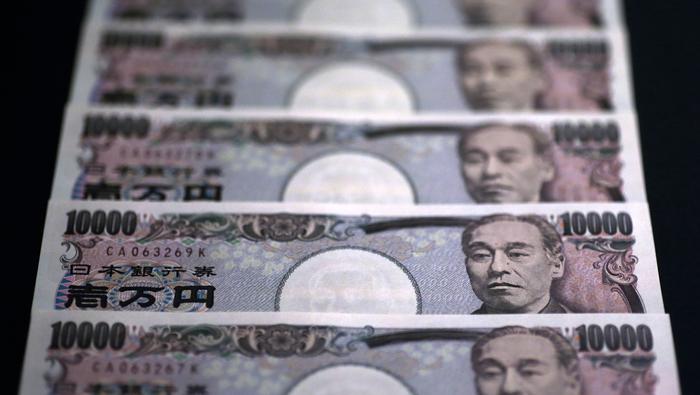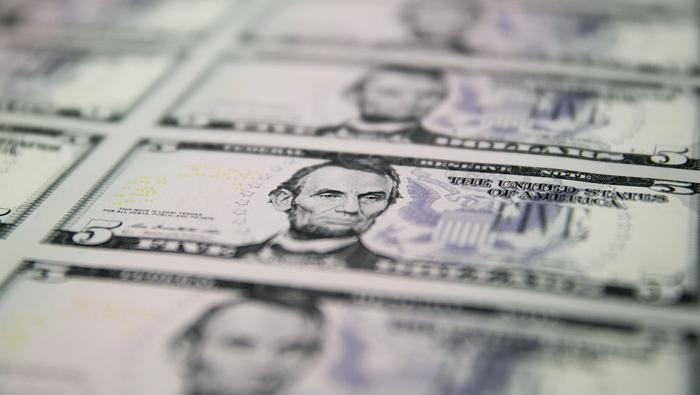2024-04-09 14:40
Gold Hits Yet Another All-Time High, Silver Surges Ahead of US CPI Teaser: Precious metals soar, with gold printing another new high and silver picking up where it left off last week. Prices appear immune to warnings of delayed rate cuts Gold (XAU/USD), Silver (XAG/USD) Analysis Markets eying FOMC minutes and US inflation data for clues on rate path Gold appears impervious to USD strength and overbought conditions Silver breaks out of prior shackles, eying levels not seen since 2021 Gold has become a highly monitored asset during anticipated monetary policy normalisation and elevated geopolitical tensions. Find out what out analysts forecast for the precious metal in Q2 Markets Eying FOMC Minutes and US Inflation Data for Clues on Rate Path The big focus will be whether US CPI data will continue to taunt the Fed and their forecast of needing to cut interest rates three times this year. Recent robust data and an economy on track for 2.5% (annualized) growth despite elevated interest rates, has forced a reassessment of the timing and magnitude of US rate cuts this year. PCE data for February proved to be rather stubborn and a similar CPI print may provide support for the US dollar and potentially send it back towards the swing high around 105. Gold has been largely impervious dollar strength as central bank buying has remained strong alongside solid retail buying out of China. Current economic conditions are not exactly primed for rate cuts, especially with commodity prices, like oil, pushing higher. Gold Appears Impervious to USD Strength and Overbought Conditions Gold is on track for its eighth successive day of record gains, barely slowing down to provide better entry points for a bullish continuation. The precious metal shows little sign of even a minor pullback, but a potentially hot CPI print may pose the sternest challenge in recent times. However, even hotter CPI data may have little effect on what looks like a one-way market as rising US treasury yields have been ineffective when it comes to arresting gold’s rapid ascent. It is not often that the dollar and US yields move in opposite directions, but this is exactly what has been observed over the last week, with the weaker dollar actually presenting a discount to foreign buyers of the dollar-linked metal. With no prior target levels, upside levels of consideration are up to interpretation. Yesterday the Bank of America raised its gold outlook, expecting the metal to average $2,500 an ounce by Q4. The bull case even sees prices hitting $3,000 an ounce in 2025. Citi also revised its 2024 outlook to $2,400 despite anticipating a near-term decline. The RSI shows gold trading deeper into oversold territory - which usually precedes a market correction, even a minor pullback. However, solid central bank purchasing and the safe-haven appeal of the metal suggests it may take time for the market to cool. Tensions in eastern Europe and the Middle East stepped up a notch over the last week and continues to provide a tailwind for gold. Gold (XAU/USD) Daily Chart Source: TradingView, prepared by Richard Snow Silver Breaks out of Prior Shackles, Eying levels not Seen Since 2021 Silver bulls really came to the party last week, elevating the metal above the prior level of resistance at $26.10. The metal finds immediate resistance at the $28.40 zone which came into play at the end of 2020 and the first half of 2021. Support naturally appears at the 78.6% Fibonacci retracement of the major 0221-2022 decline at $27.41. Silver, unlike gold, has previously traded higher than where we are now, meaning price targets can be identified a lot easier. For not, this appears at the full retracement of the aforementioned major move, a little over $30. This is however, conditional upon a close and hold above $28.40. Silver (XAG/USD) Weekly Chart Source: TradingView, prepared by Richard Snow https://www.dailyfx.com/news/gold-hits-yet-another-all-time-high-silver-surges-ahead-of-us-cpi-20240409.html

2024-04-09 11:30
Japanese Yen Prices, Charts, and Analysis Verbal intervention is not strengthening the Japanese Yen. Official intervention may now be needed to move the dial. Warnings Fall Short The Japanese Yen is weak and is set to remain weak in the coming days unless Japanese officials turn from verbal intervention – trying to talk the Yen up - to official fx-market intervention. A range of Japanese government, BoJ, and MoF officials have opined over the past few weeks telling the market, via certain phrases, that the Japanese Yen is too weak for their liking and that they are ‘closely watching’ the situation. These warnings however have fallen on deaf ears as the Yen remains within touching distance of making a fresh, multi-decade low against the US dollar. If talking fails to strengthen the Yen, the BoJ has several tools at its disposal: Interest Rates: A Double-Edged Sword One of the most potent tools in the BOJ's arsenal is setting interest rates. Lower interest rates make borrowing cheaper, stimulating economic activity and potentially weakening the Yen. This is because investors might seek higher returns elsewhere, leading to a decrease in Yen demand. Conversely, raising interest rates attracts foreign investment due to better returns, strengthening the Yen. Yield Curve Control: A Delicate Balance The BOJ also employs Yield Curve Control (YCC), a strategy where they target a specific range for long-term Japanese government bond yields. By influencing bond yields, the BOJ indirectly affects short-term interest rates and overall market sentiment towards the Yen. Foreign Exchange Intervention: A Direct Approach In extreme circumstances, the BOJ can directly intervene in the foreign exchange market. This involves buying or selling Yen to influence its exchange rate. Buying Yen strengthens it while selling weakens it. However, this approach can be expensive and is often used in conjunction with other policy tools. USD/JPY: The Market of the Bank of Japan? USD/JPY has remained just below 152.00 for the last two weeks with any small pull-back being bought. The tight trading range seen since the end of March – using the CCI indicator - suggests that traders are becoming increasingly wary of making any new directional bet, especially if officials are closely watching any potential break higher. The daily chart shows a positive setup with a bullish flag formation visible, while the spot USD/JPY price is above all three simple moving averages. A breakout is on the way, either a technical break higher or an official intervention break lower and traders should be prepared for a sudden bout of volatility. USD/JPY Daily Price Chart Retail trader data shows 14.67% of traders are net-long with the ratio of traders short to long at 5.82 to 1.The number of traders net-long is 3.77% higher than yesterday and 4.04% lower than last week, while the number of traders net-short is 4.86% higher than yesterday and 2.22% higher than last week. We typically take a contrarian view to crowd sentiment, and the fact traders are net-short suggests USD/JPY prices may continue to rise. What is your view on the Japanese Yen – bullish or bearish?? You can let us know via the form at the end of this piece or contact the author via Twitter @nickcawley1. https://www.dailyfx.com/news/japanese-yen-nears-a-multi-decade-high-will-talk-turn-to-action-20240409.html

2024-04-09 08:17
US Dollar (DXY), Treasuries News and Analysis US CPI data in focus as a potential re-acceleration in prices gains traction USD eases ahead of CPI – bullish outlook still constructive Treasury yields trend higher suggesting USD may have to play catch up if we see hotter data Elevate your trading skills and gain a competitive edge. Get your hands on the U.S. dollar Q2 outlook today for exclusive insights into key market catalysts that should be on every trader's radar: US CPI Data in Focus as a Potential Re-acceleration in Prices Gains Traction Tomorrow, US CPI data is likely to garner much attention, especially after recent, key shorter-term measures of inflation suggest price pressures may be re-accelerating. Shorter-term measures of inflation, such as the month-on-month comparisons, have revealed a stubbornness in getting inflation down to 2%. Impressive US data has also helped contribute to the lack of progress on the inflation front, with US GDP expected to be 2.5% according to the Atlanta Fed’s GDPNow forecast and last week’s jobs report revealed a massive surprise of an additional 300k jobs added in March. However, the overall disinflationary narrative is becoming harder to motivate, given the rise in current, shorter-term price data. The Fed has often cited a measure of inflation referred to as ‘super core’, which comprises of services inflation less energy and housing. This measure strips out volatile items like fuel and removes the effect of housing data which tends to have a massive lag. Super core has been rising faster (MoM) than the year-on-year data for six months now and is starting to resemble what we saw back in 2022 when prices were on the rise. US Super Core Accelerating in the Shorter-Term Source: Stephane Deo via X, Eleva Capital & Bloomberg USD Eases Ahead of US Inflation Data – Bullish Outlook Still Constructive The US dollar (via proxy DXY) has been on the decline in April, apart from April Fool’s Day. It must be noted that the majority of the US dollar basket is comprised of the EUR/USD pair and the recent lift in confidence/sentiment surveys in the EU has added to the view that things are looking up in the EU. DXY finds support currently at the 50% Fibonacci retracement of the 2023 decline, with the 50 and 200-day simple moving averages (SMAs) reinforcing that general area. Therefore, should inflation data surprise, or simply remain robust, there is potential for the dollar to rise in the aftermath of the report. This is backed up further by rising US treasury yields (2- year and 10-year). The bullish posture holds as prices trade above the 50 SMA, and the 50 SMA is above the 200 SMA - which suggests a bullish setup. Resistance appears at 104.70 followed by the swing high of 105. US Dollar (DXY) Daily Chart - 9 April 2024 Source: TradingView, prepared by Richard Snow Treasury Yields Trend Higher US Treasury yields have maintained the longer-term uptrend as robust US data continues to lower expectations of aggressive rate cuts materialising in 2024. Markets have even started to entertain a greater likelihood of that first rate cut only coming through in July, instead of June. In addition, the market is pricing in the possibility of only two cuts this year as opposed to the Fed’s three, something that ought to keep the dollar supported. US Treasury Yields (10-Year) – 9 April 2024 Source: TradingView, prepared by Richard Snow Stay up to date with the latest breaking news and themes by signing up to the DailyFX weekly newsletter: https://www.dailyfx.com/news/us-dollar-retreats-ahead-of-us-cpi-treasuries-seen-rising-20240409.html

2024-04-08 23:15
Most Read: US Dollar on Defense Before Key US CPI Data – Setups on EUR/USD & USD/JPY Gold has soared and hit one record after another this year, with the bulk of the bullish move taking place over the course of the past two months. During this upswing, the typical negative relationship between XAU/USD and U.S. real rates (using the U.S. 10-year TIPS as a proxy) has broken down dramatically, unnerving investors. As the chart below illustrates, bullion has climbed even as real yields (displayed on an inverted scale for better visualization) have risen relentlessly. This unexpected dynamic runs counter to the norm – higher bond yields typically dampen the appeal of non-interest-bearing assets like the yellow metal, as investors seek better returns in the fixed-income space. Source: TradingView WHAT COULD EXPLAIN CURRENT MARKET DYNAMICS? PERSONAL VIEW I am inclined to believe in the first hypothesis. The annals of history are replete with instances where popular assets have fallen prey to speculative appetite, propelling prices to unsustainable heights divorced from underlying economic fundamentals. This unsustainable momentum creates a distorted environment where valuations lose touch with intrinsic value. Eventually, sentiment shifts, and a sharp correction follows, restoring a more realistic market equilibrium. I think this could happen to gold over the medium term. Wondering how retail positioning can shape gold prices in the near term? Our sentiment guide provides the answers you are looking for—don't miss out, get the guide now! https://www.dailyfx.com/news/xau-usd-gold-price-outlook-drivers-behind-market-boom-reversal-or-new-record-ahead-20240408.html

2024-04-08 21:30
Most Read: US Dollar on Defense Before Key US CPI Data – Setups on EUR/USD & USD/JPY EUR/USD, the most heavily traded currency pair in the forex market, provides a wealth of attractive opportunities for retail traders. Its unparalleled popularity and deep liquidity create a dynamic environment where numerous strategic approaches can thrive. In this article, we'll examine 10 of the most widely employed strategies by seasoned traders. Trend Trading: Trend trading involves identifying and following the prevailing direction of the market. Traders using this strategy will look for trends in EUR/USD, whether it's an uptrend or a downtrend, and enter positions in the direction of that trend. Technical indicators such as moving averages, MACD, and trend lines are commonly used to identify and confirm trends. Range Trading: Range trading involves identifying areas of support and resistance within which EUR/USD fluctuates. Traders employing this strategy will buy near support levels and sell near resistance levels, aiming to profit from the price oscillations within the range. Bollinger Bands and support/resistance levels are commonly used tools for range trading. Breakout Trading: Breakout trading involves entering positions when EUR/USD breaks out of a defined range or a significant technical level. Traders using this strategy will wait for a decisive move above resistance or below support and enter positions in the direction of the breakout, anticipating a continuation of the momentum. Volatility indicators such as Average True Range (ATR) can help identify potential setups. Correlation Trading: Correlation trading involves analyzing the relationship between EUR/USD and other related assets, such as gold, equities, or other currency pairs. By identifying correlations, traders can anticipate potential movements in EUR/USD based on the performance of these related assets. For example, a positive correlation between EUR/USD and GBP/USD may lead traders to buy EUR/USD when cable rises. Pattern Trading: This strategy involves identifying repetitive price configurations and using them to predict future movements. Traders using this strategy look for chart patterns such as triangles, flags, head and shoulders, and double tops/bottoms, among others. Once a pattern is identified, traders enter positions with defined entry and exit points based on the expected price movement indicated by the pattern. Scalping: Scalping is a short-term trading strategy that aims to profit from small price movements. Traders using this strategy enter and exit positions quickly, often within seconds or minutes, capturing small increments of profit multiple times throughout the day. Scalping requires a high level of focus, discipline, and the use of tight stop-loss orders to manage risk effectively. Mean Reversion Trading: Mean reversion trading involves identifying periods when EUR/USD has deviated significantly from its historical average and taking positions to capitalize on the expected return to the mean. Traders employing this approach often analyze critical moving averages, observing the extent to which prices have diverged from them within a brief timeframe, before making trading decisions and betting on a reversal. Seasonality Analysis: Seasonal trading involves analyzing historical patterns and trends on EUR/USD to identify recurring seasonal or cyclical trends. Traders employing this strategy may observe certain months or times of the year when the pair tends to exhibit consistent price movements or tendencies, allowing them to anticipate and capitalize on these patterns. Sentiment Analysis: Sentiment analysis involves assessing the prevailing mood among traders towards EUR/USD by analyzing current positioning. Traders employing this strategy may use sentiment indicators (such as IG client sentiment data), news sentiment analysis tools, or social media sentiment analysis to gauge market sentiment and enter positions based on contrarian signals. https://www.dailyfx.com/news/forex-eur-usd-top-10-trading-strategies-for-different-market-conditions-20240408.html

2024-04-08 17:00
Most Read: Kiwi and Aussie Outlook Ahead of the RBNZ Meeting Consensus forecasts predict a 0.3% monthly increase in headline CPI, lifting the 12-month reading to 3.4% from 3.2% previously. The core CPI is also expected to rise 0.3% on a seasonally adjusted basis, though the annual rate is projected to slow slightly to 3.7%, a small step in the right direction. Conflicting Fed Signals Add to Uncertainty Comments from Fed Chair Jerome Powell last week indicate that the FOMC's policy path has not materially changed, meaning 75 basis points of easing is still possible for this year. These remarks appear to have played against the greenback in recent days. Although Powell is the most important voice at the U.S. central bank, other officials are beginning to express reservations about committing to a preset course. Governor Michelle Bowman, for example, has voiced concerns over the stagnation of disinflation efforts and is unwilling to slash borrowing costs until new signs of diminishing price pressures emerge. Access a well-rounded view of the U.S. dollar’s outlook by securing your complimentary copy of the Q2 forecast! Fed Dallas President Lorie Logan also seemed to have embraced a more aggressive posture, underscoring that it's too early to entertain easing measures, pointing to sticky CPI readings and resilient demand as compelling factors supporting her viewpoints. Taking everything into account, if the inflation outlook continues to deteriorate, the FOMC might find itself compelled to adopt a more hawkish position. With the labor market displaying remarkable strength, policymakers have sufficient leeway to exercise caution before moving towards a looser policy stance. Inflation Report Will Dictate Dollar's Direction Traders should closely watch the upcoming CPI numbers and brace for potential volatility. That said, if the data surprises to the upside, U.S. Treasury yields could extend their recent advance, allowing the U.S. dollar to reassert its leadership in the FX space and resume its upward journey. With oil prices pushing towards multi-month highs, this scenario should not be ruled out. On the flip side, if the CPI data falls short of what’s priced in, we could see a different reaction in the markets as traders boost bets of rate cuts. This could result in lower yields and a weaker U.S. dollar in the near term, especially if the magnitude of the miss is significant. EUR/USD TECHNICAL ANALYSIS EUR/USD edged up on Monday, consolidating above both its 50-day and 200-day simple moving averages and nearing Fibonacci resistance at 1.0865. Bears will need to fiercely defend this technical ceiling; failure to do so could trigger a rally towards an important trendline at 1.0915, followed by 1.0980. Alternatively, if sellers regain the upper hand and propel prices below the aforementioned moving averages, a retreat toward 1.0740 might occur. The pair is likely to stabilize in this region upon testing it, but in the event of a breakdown, a pullback towards the 1.0700 handle may be imminent. EUR/USD PRICE ACTION CHART EUR/USD Chart Created Using TradingView USD/JPY TECHNICAL ANALYSIS USD/JPY moved higher on Monday, tentatively approaching its 2024 highs established last month. Despite gains, the pair remains trapped within a narrow band of 152.00 to 150.90, a range it has maintained for the past couple of weeks, as seen in the daily chart below. Traders seeking guidance on the pair’s near-term prospects are advised to monitor resistance at 152.00 and support at 150.90 attentively. In the event of a bullish breakout, a potential rally towards the upper limit of a short-term ascending channel at 155.25 may unfold, contingent upon Tokyo refraining from intervening in currency markets to bolster the yen. Conversely, if prices pivot lower and a breakdown eventually takes place, sellers might be enticed to re-enter the market, paving the way for a slide towards the 50-day simple moving average near 149.80. On further weakness, channel support at 148.80 would be the next area of interest. USD/JPY PRICE ACTION CHART USD/JPY Chart Created Using TradingView https://www.dailyfx.com/news/forex-usd-dollar-on-defense-before-key-us-cpi-data-setups-on-eur-usd-usd-jpy-20240408.html
